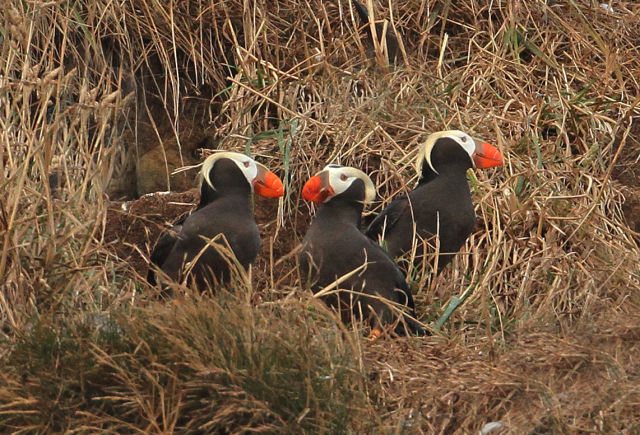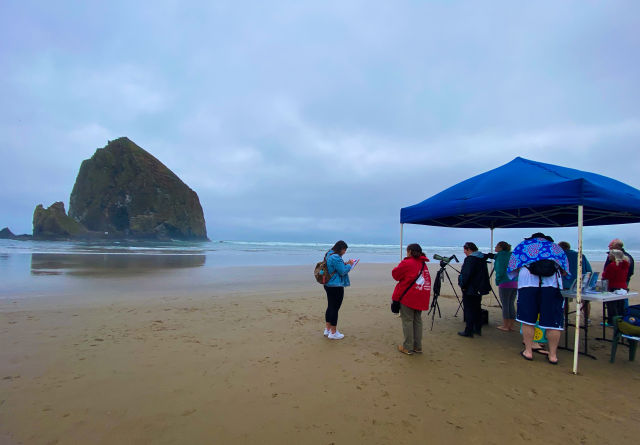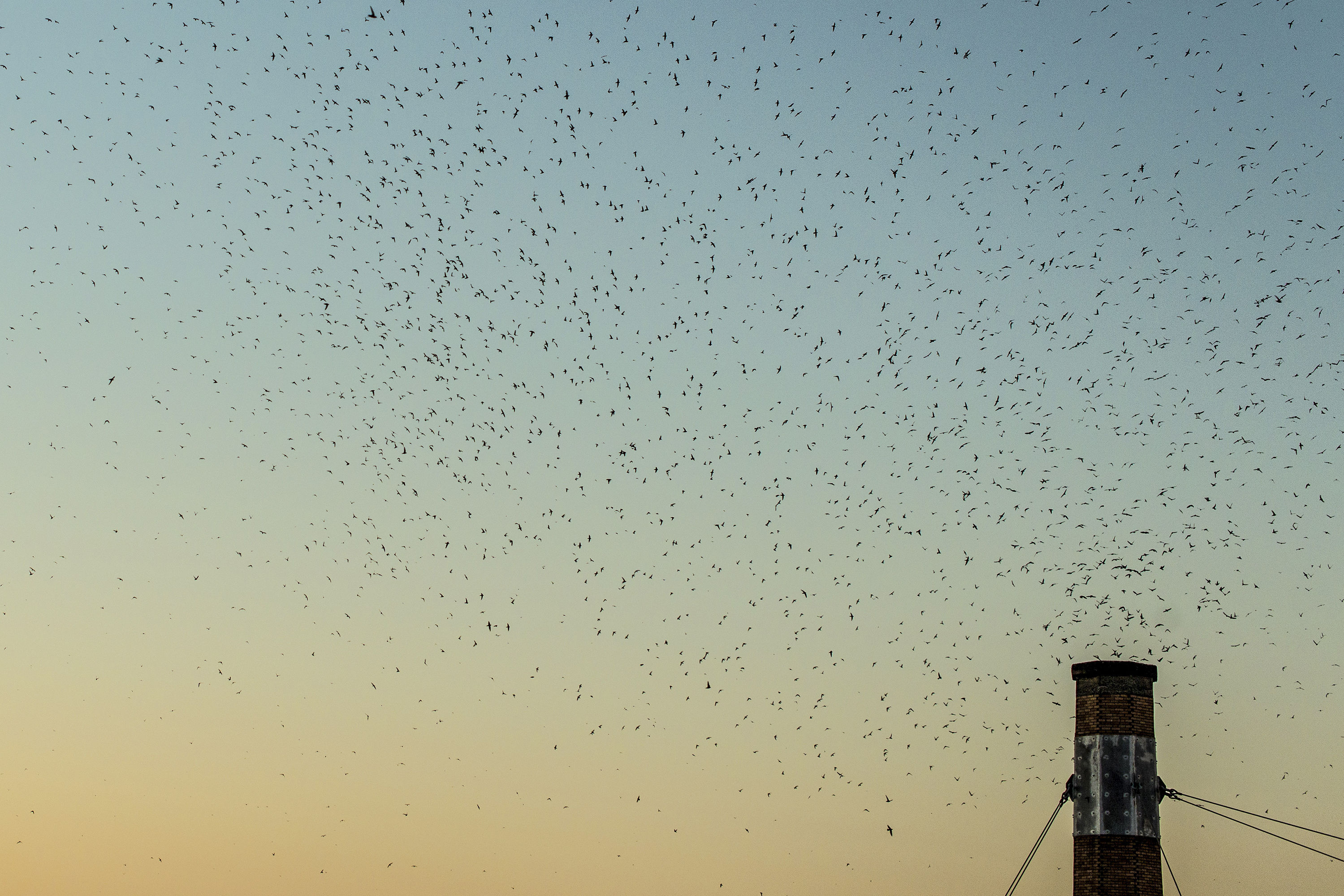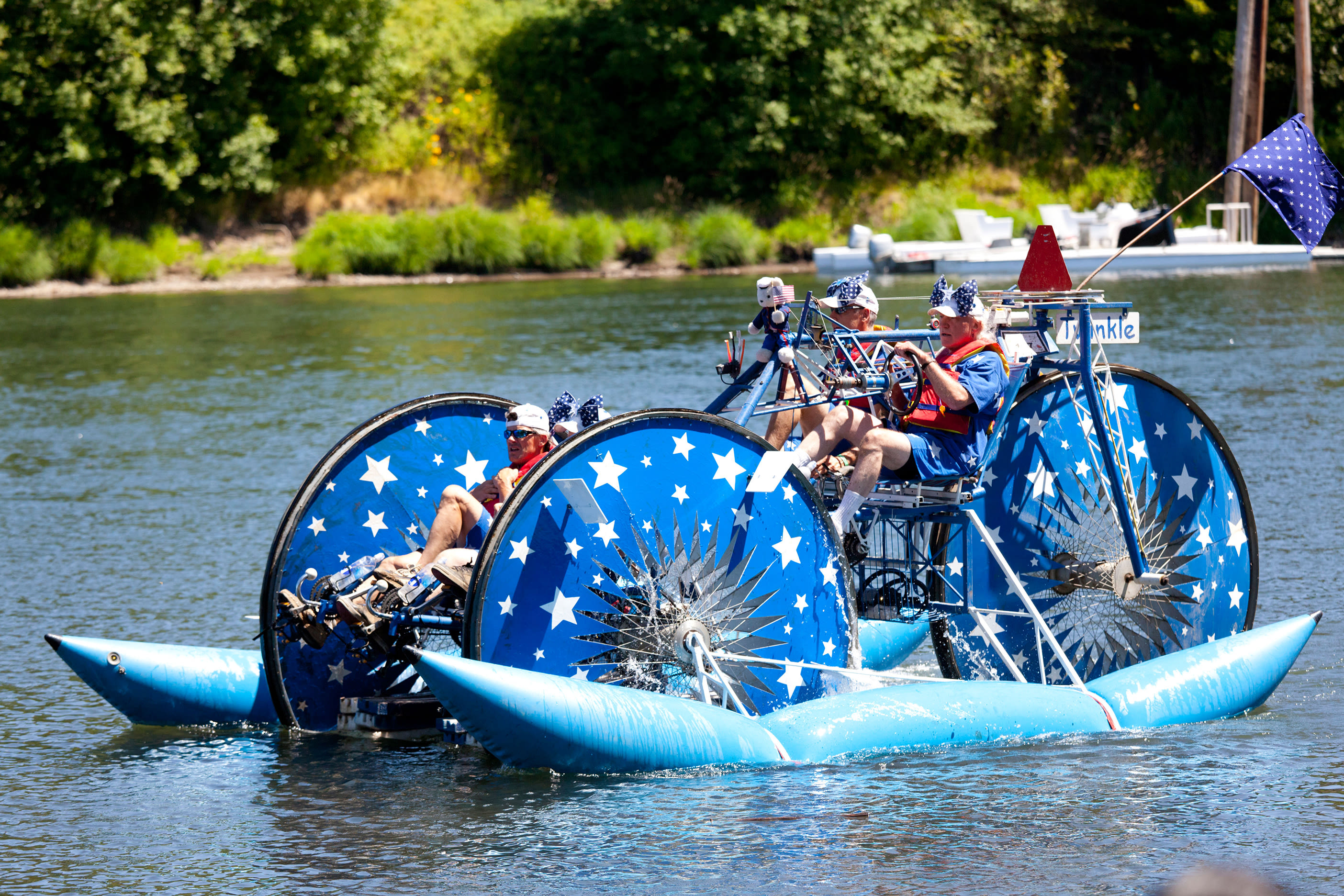Tufted Puffins Are Disappearing from Oregon’s Coast

Image: Courtesy US Fish & Wildlife
John Underwood has always been fascinated by tufted puffins. For more than 60 years, he’s been visiting Cannon Beach to watch the charismatic seabirds swoop and waddle around Haystack Rock. The stocky birds are easily recognized: solid black with a white mask, long yellow plumes running down the back of their head, and a large, triangular orange bill, a combination that resembles some crossbreed between punk rocker and clown. But over the past decade or so, he says, Underwood started seeing fewer and fewer of them during his regular visits.
“When I was down there early on there were thousands of puffins on the Rock,” says Underwood, who sits on the board of directors of Friends of Haystack Rock, a nonprofit that promotes wildlife preservation at Haystack Rock’s Marine Garden and National Wildlife Refuge. A 2021 count by US Fish & Wildlife staff and volunteers estimated the Haystack Rock puffin population at just 98.
Cannon Beach’s iconic sea stack is one of the only places in the lower 48 where you can catch a glimpse of tufted puffins from the shore. Other offshore colonies, like that at Three Arch Rocks near Cape Meares, can only be accessed by boat. After wintering out in the open ocean, the seabirds return to Haystack Rock and other regular breeding locations from April through August, using their large bills to dig burrows into steep grassy slopes. Their cartoonish-looking features have been captivating curious onlookers for decades, yet the birds are merely playing dress-up for mating season. Come fall, their plumage transforms to a drab, dark hue and they shed part of their beak, helping to camouflage them from predators.

Tufted puffins in the grass
Image: Courtesy US Fish & Wildlife
The mating season provides a short window of time for wildlife biologists, like Shawn Stephensen of the U.S. Fish and Wildlife Service, to conduct research. “We don't know exactly where they go during winter. We have plans to put transmitters on some birds so we can track their movements, but that hasn't occurred yet,” says Stephensen, who is based at the Oregon Coast National Wildlife Refuge Complex in Newport and has been studying tufted puffins for nearly 15 years.
In 2008, a tufted puffin survey conducted by the U.S. Fish and Wildlife Service set off alarm bells with a count of just 142 birds for the entire Oregon coast—a dramatic decline from 1988, where the count averaged around 5,000. Those 2008 numbers have increased to 553 statewide, according to the 2021 survey. But that’s still a far cry from what it was back in the 1980s, and not exactly a recovery. “I would refer to that more as being stable. I mean, it is a slight increase,” says Stephensen.
Researchers say the decline may be related to multiple causes, including habitat loss, climate change and changes in marine food systems, oil spills, and increased predation by bald eagles. Stephensen also warns that people should not use drones around Haystack Rock during breeding season: the puffins perceive drones as predators, and their defense mechanisms kick in, sometimes prompting them to leave their pufflings alone in the nest and vulnerable to actual predators.
Despite the steep drop in population, Oregon has not listed tufted puffins as an endangered species. Meanwhile, the Washington Department of Fish & Wildlife added them to that state’s endangered species list in 2015, and it maintains a recovery plan for the birds. The seabirds were not granted federal protection (which bald eagles enjoyed for most of the 20th century) by the U.S. Fish and Wildlife Service in 2020 after a very broad, range-wide estimate along the Pacific Rim that deemed the population is showing “stable or increasing trends.” However, tufted puffins in the southern region, namely the Pacific Northwest and California, have rapidly disappeared over a short amount of time. (The same decline has not been seen in breeding locations in Alaska.)
“If the tufted puffin had been designated endangered, then there are resources and support and focus and coordination that comes with that at the federal level. Since it was not designated, then we are kind of left out in the cold so to speak,” says Angela Benton, board chair of Friends of Haystack Rock. “I call it a precipitous decline over the decades. And again, when is the species no longer going to exist on the coast of Oregon? We don't know what that threshold is.”

Volunteer counters at a past Great Puffin Watch
Image: Tiffany Boothe
A few years back, Underwood launched a “Protect our Puffins” campaign with the help of Friends of Haystack Rock, selling shirts and other puffin merchandise that helps fund research and raise awareness of the birds’ plight, along with other outreach programs.
For now, bird lovers can still see the comical seabirds at events like the annual Great Puffin Watch, where viewing scopes are set up at Cannon Beach every Fourth of July weekend. Friends of Haystack Rock has also recently partnered with the National Audubon Society and hope to raise money for additional tufted puffin conservation work and outreach.
“Hopefully we’ll get the funding in place so we can move forward with that and really turn a corner with these birds,” says Underwood.














